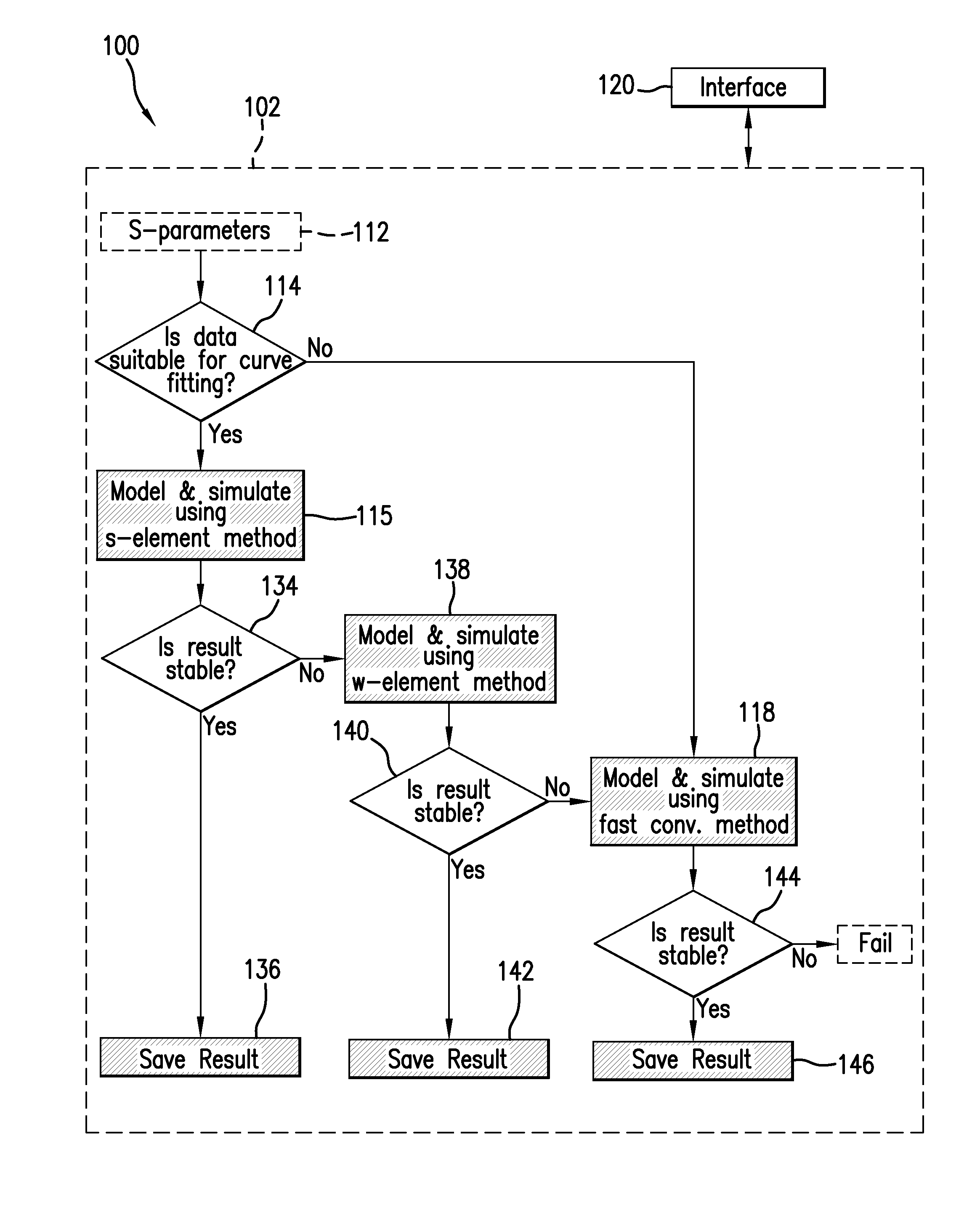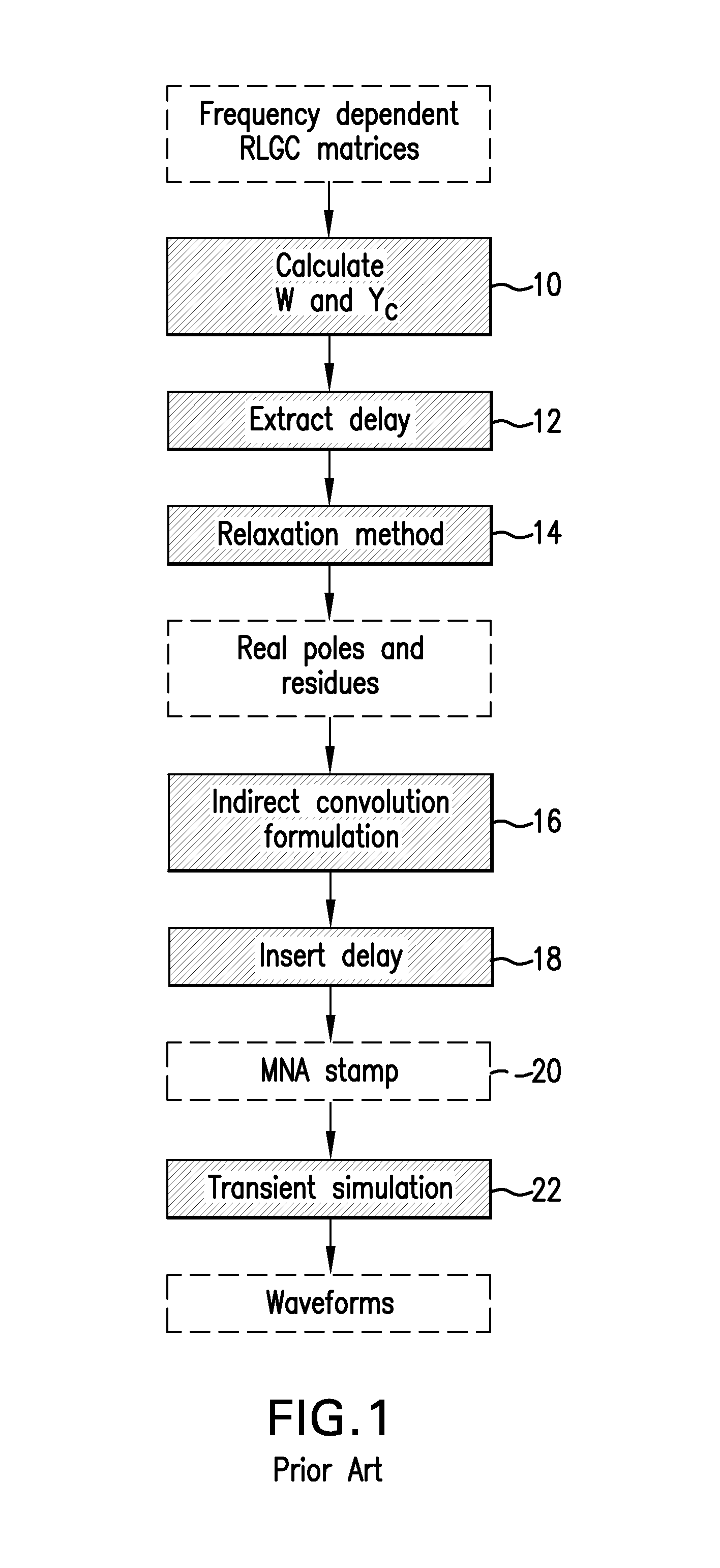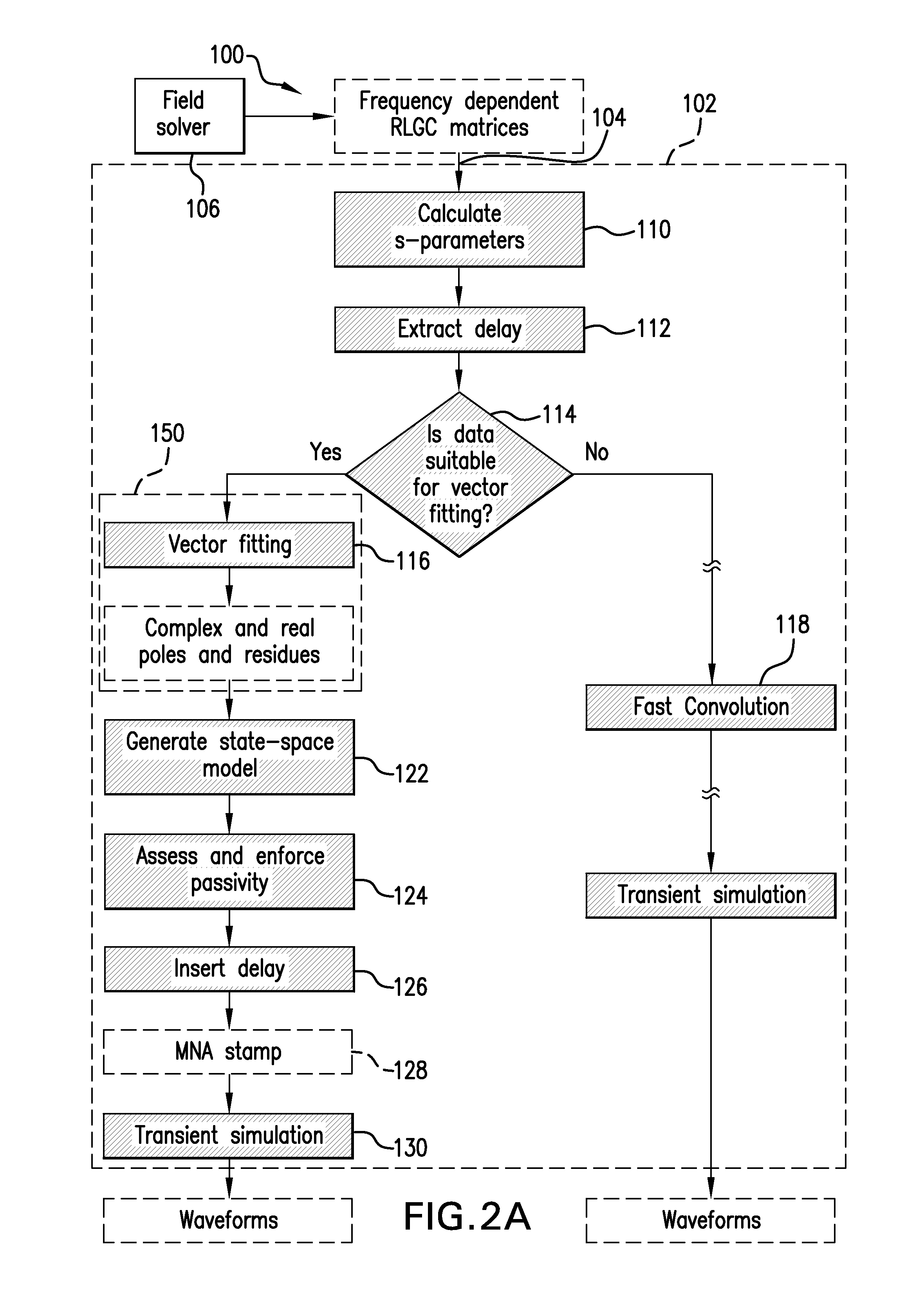Method and system for adaptive modeling and simulation of lossy transmission lines
a transmission line and adaptive modeling technology, applied in the field of adaptive modeling and simulation of lossy transmission lines, can solve the problem that the ideal short-circuited point-to-point connection of physical circuit interconnections such as conductive etches extending between neighboring components of the printed circuit board (pcb) cannot be modeled
- Summary
- Abstract
- Description
- Claims
- Application Information
AI Technical Summary
Benefits of technology
Problems solved by technology
Method used
Image
Examples
examples
[0154]Numerous modeling / simulation cases have been run to validate the subject method and system. Among them, validation cases were run for the vector fitting approach (initiated by logic unit 116 as shown in FIGS. 2 and 6) to modeling / simulation. An equivalent circuit representing a coupled microstrip line example is schematically illustrated in FIG. 10. In this particular example, the line includes two lines, each 5 inches in length, and is characterized by frequency dependent RLGC data with 50 GHz bandwidth. Transient simulation was performed twice for validation purposes, once with the line modeled in accordance with an embodiment (referenced herein as the ‘s-element’ method) of the present invention disclosed herein, and once with the line modeled in accordance with a known W-element method.
[0155]FIG. 11 illustrates the reference input waveform V1 applied (as represented by the voltage source) to the line's circuit of FIG. 10. The waveform V1 shown defines a pulse having rise a...
PUM
 Login to View More
Login to View More Abstract
Description
Claims
Application Information
 Login to View More
Login to View More - R&D
- Intellectual Property
- Life Sciences
- Materials
- Tech Scout
- Unparalleled Data Quality
- Higher Quality Content
- 60% Fewer Hallucinations
Browse by: Latest US Patents, China's latest patents, Technical Efficacy Thesaurus, Application Domain, Technology Topic, Popular Technical Reports.
© 2025 PatSnap. All rights reserved.Legal|Privacy policy|Modern Slavery Act Transparency Statement|Sitemap|About US| Contact US: help@patsnap.com



